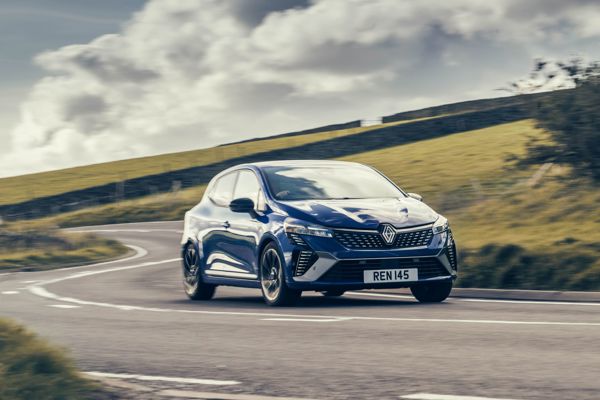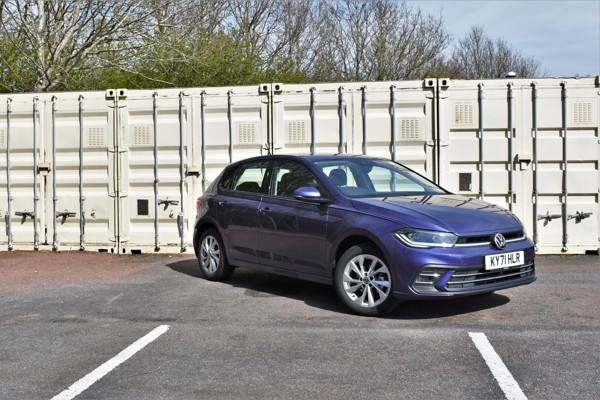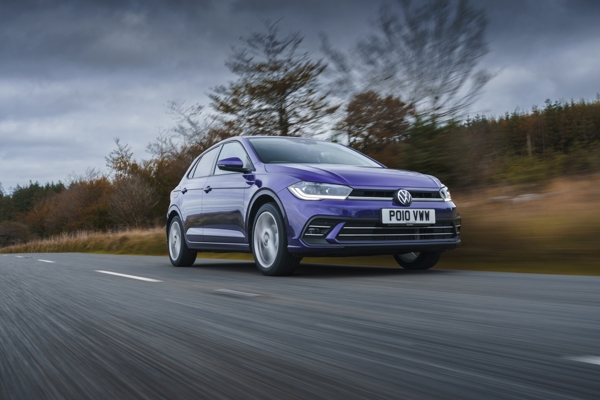Review
The Fabia has been a much-loved member of the Fleet News long-term test fleet over the last six months, despite being the smallest and cheapest model in our car park.
With much larger and more expensive models sitting alongside it, I was initially surprised at how well received the model was.
Of course, after spending some time behind the wheel It became apparent just how good the Fabia is.
It’s nimble and light, which makes it handle well. The visibility is good, and the steering is light, so it’s easy to park. There’s plenty of space inside, meaning your passengers won’t complain, and the boot is huge.
The 1.0-litre petrol engine, with its 116PS output, is surprisingly quick and frugal in equal measure.
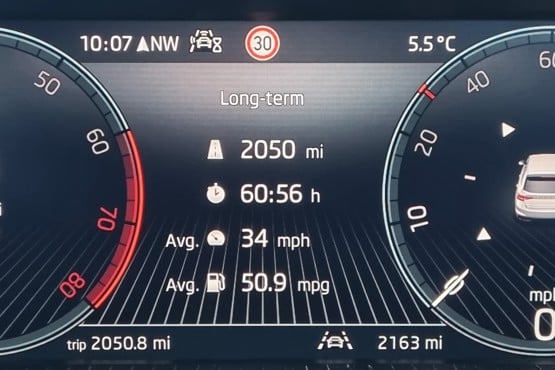
We averaged more than 50mpg during our time with the car. Not bad at all when the official WLTP figure is 55mpg.
Our SE L model was replaced by a new SE L Edition version, with a greater level of kit. Although we thought the Fabia was well appointed for its price.
The Fabia, in its current guise, is a few years old now, but that doesn’t mean it feels dated. There’s no hybrid or electric powertrain option, which is the biggest giveaway, but when it comes to driveability and technology it’s up there with the latest models.
When we compared the Fabia’s running costs in our last report (see below), it put in a reasonable performance but is far from the ‘value’ offering it once was.
Skoda is evolving and even it’s entry-level Fabia is now a big step up from where the brand once was. So, it might not be the cheapest small car on the market, but the Fabia is a very competent and likeable model.
How does it compare to rivals?
Small hatchbacks account for around 10% of all true fleet sales as more and more drivers seek lower company car tax rates from larger electric models.
For those with small car allowances, there’s still a lack of choice when it comes to powertrains and petrol is the prominent choice.
The Volkswagen Polo, a close relation to our Fabia, was the most popular small car in the true fleet market in 2024.
While the Polo is an impressive car, the Fabia gives you more. More space, more power and more gears.
Unless you opt for the sporty Black Edition trim, VW only offers the Polo with a 95PS version of its 1.0-litre TSI engine. The Fabia, like ours, can be had with 116PS. You also get a six-speed gearbox, rather than a five-speed one.
At £22,755 (P11d), the Fabia SE L Edition is costs about the same as Polo Style, but drivers will pay slightly less benefit-in-kind (BiK) tax as the Fabia’s six-speed gearbox means CO2 emissions are slightly lower.
Running costs are closely aligned between the two. The Polo edges ahead with fractionally better residuals netting 34ppm versus 34.5ppm for the Fabia.
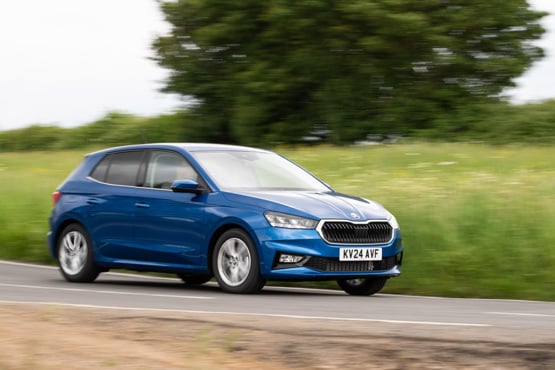
Elsewhere in the market, the Vauxhall Corsa is another strong seller. In GS trim, complete with a 100PS 1.2-litre Turbo engine it costs fractionally more than our Fabia. But, opt for the Corsa ‘Yes’ – frankly why you’d pick any other variant is beyond us – and the price falls to £18,230 (P11d).
The Corsa comes packed with kit and manages to one-up the Fabia by including heated seats as standard. BiK is lower, at £85 per month vs £100, despite the car having slightly higher emissions. Fleets will also reap the rewards of lower running costs, at 32ppm.
With less equipment, higher running costs and the least efficient engine, Mini’s 5-door hatch comes in at £23,845. Strong residuals mean running costs are still competitive, at 35ppm, and it’s the best of the bunch to drive.
The wildcard choice is the new MG 3 Hybrid. Costing £20,275, in range-topping Trophy trim, it comes with an excellent array of equipment, emits just 100g/km of CO2 and is the cheapest to run at 29.5ppm. Driveability and refinement aren’t a match for the Fabia, but it’s hard to argue with those numbers.
Of course, numbers only tell part of the story and some will be swayed by badge or styling to a greater extent. Where the Fabia really does shine is space. It’s far more practical than the others with a massive boot and plenty of space on board for passengers. Throw in the excellent refinement and impressive driveability and the Fabia is still a strong choice as far as we’re concerned.
Updates bring specification boost
Smaller cars are becoming increasingly more intelligent. The days of compact models having only basic equipment levels are long gone and our Fabia is a great example of that evolution.
Going back a couple of generations, even items like electric windows were not included on Skoda's entry-level models. Today, the Fabia comes with plenty of standard kit.
A recent revision to the Fabia trim level line-up has introduced four new models, replacing the existing ones. The new model range consists of SE Edition, Design Edition, SE L Edition and Monte Carlo Edition. Prices have been increased by £150 across the board.
It means that all Fabia models come with Keyless start/stop, LED lights, Cruise control, dual-zone climate control and electric rear windows as standard. The SE Edition starts at £19,880.
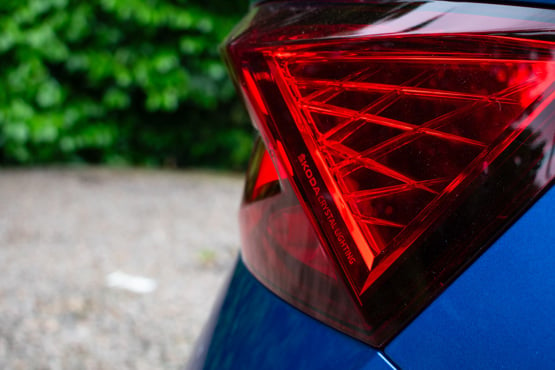
Our Fabia SE L already packs a decent equipment array, as we've previously highlighted, but the new SE L Edition gains a rear view camera, automatic rain-sensing wipers and electric folding door mirrors.
Having lived with the Fabia for some time, I can see where these extra features would come in handy. And for only a £150 uplift in price, the Fabia is still good value.
At the time of writing, winter is descending and bringing colder temperatures. One item of specification I wish our Fabia did have is heated seats. They're optionally available for a reasonable £240, or £540 if combined with a heated windscreen. Unfortunately we forgot to tick the box when we ordered the car.
On a more positive note, the 1.0-litre petrol engine gets up to temperature nice and quickly and the 'simply clever' ice scraper - located in the fuel door - has come in handy on more than one occasion.
Small by name, large by nature
Small cars are getting bigger. There’s no escaping it. In fact, all cars are getting bigger. I hadn’t really appreciated just how much.
I recently found myself facing a 350-mile round trip from Peterborough to the Cotswolds and the Fabia was the only car at my disposal. I’ll admit I felt a slight reluctance at having to complete such a long journey in a ‘small’ car.
On the day in question, it was absolutely chucking it down with rain too.
Phone connected via Android Auto, route punched in to Google Maps, I set off with an estimated three-and-a-half hours of driving ahead of me.
Quite quickly it became apparent that the Fabia is exceptionally competent on the motorway. Despite the rain, poor visibility and prolonged driving at higher speeds, the car took it all in its stride.
The automatic climate control kept the cabin warm and the windows clear of condensation. The audio system was more than up to the task of keeping me entertained with 90s tunes. Most impressively? The miles-per-gallon readout was showing 55.
Due to traffic conditions, the journey ended up taking four hours. I emerged from the car feeling unafflicted by the pretty challenging conditions I’d just tackled. What made this moment even more satisfying was remembering the ‘simply clever’ umbrella that’s stored in the driver’s door.

After a few hours of driving another car around the Cotswolds, I jumped back in the Fabia for the return leg. Thankfully the roads had dried up, traffic was calm and I was able to open up the little 1.0-litre engine a bit. Here’s the next surprise. The Fabia is a rapid thing!
It’s eager to accelerate, not just around town but at higher speeds too. The engine is extremely flexible, developing power across a broad rev range. Paired with the six-speed manual gearbox, dare I say it’s actually quite fun to drive.
Back to my point about size. I looked up the Fabia’s dimensions and found that it’s actually larger than a Volkswagen Golf from 20 years ago. A car that was, at the time, considered more than adequate for lengthy journeys. No wonder the Fabia feels assured.
Oh, and one more thing… 20 years ago the Golf GTi had 115PS and could accelerate from 0-62mph in 10.2 seconds. The Fabia puts out 116PS and hits 62mph a second quicker.
No hybrid, no problem
Hybrid power seems to be the buzz word in the small car segment at the moment. As manufacturers grapple with the challenge of reducing emissions while also keeping costs down, and giving buyers a practical and usable range, the switch to hybrid power is well underway.
That makes our Fabia a little ‘old fashioned’ with its 1.0-litre turbocharged petrol engine relying purely on fossil fuels.
Rival cars like the Renault Clio and Vauxhall Corsa now offer hybrid options alongside regular petrol engines, while Toyota’s Yaris is hybrid only.
But in the small car segment the VW Polo is the best-seller. It’s a car that shares a platform and powertrains with the Fabia, which means the majority of buyers aren’t necessarily looking for a hybrid.
The CO2 emissions from our Fabia are 115g/km. A Corsa Hybrid emits 106g/km, while a Clio E-Tech hybrid emits 97g/km. Drivers, therefore, face a higher benefit-in-kind tax rate for the Skoda. But it doesn’t cost as much as you might think.
For a 20% taxpayer, the Fabia costs just over £100 per month. For the Clio its £91 and the Corsa – which has a much higher P11d price – is £112.
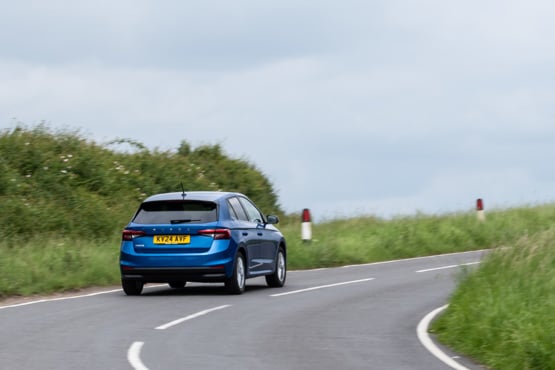
Since we took delivery of the Fabia, our long-term fuel consumption is sitting close to 50mpg. An impressive performance. On one trip, taking in motorways and A roads, it returned almost 60mpg.
Hybrid cars deliver similar numbers, in our experience. Although the biggest difference comes when you’re sat in traffic. The Fabia’s stop start system prevents unnecessary idling, but it needs the engine to move even an inch. A hybrid can crawl along in traffic burning no fuel at all.
When it comes to driving experience, the Fabia’s petrol engine, paired with a six-speed manual gearbox, is far superior to any hybrid hatchback we’ve driven. The throttle response is immediate and there’s ample power, with 0-62mph dispatched in 9.2 seconds.
You don’t have to wait for the engine to fire up or the gearbox to decide what ratio to select. You just shift and go. The simplified experience is refreshing.
Electrified cars benefit the environment and, in some cases, the pockets of drivers. In the smaller, cheaper segments, however, a petrol engine still gets the job done.
Skoda Fabia 1.0 TSI SE L joins our fleet
Skoda has been competing in the small car segment for more than 20 years with its Fabia model.
As the brand has evolved, the Fabia has too. It’s widely known as the ‘sensible choice’ among its pool of rivals, offering comfort, practicality and value for money.
For years the Ford Fiesta was the go-to model in the small car category. Ford’s decision to discontinue the Fiesta has opened up significant opportunity for other brands, including Skoda, to swoop in and pick up extra customers.
The Vauxhall Corsa has since become the dominant player in the category, but the Fabia is still a stand-out model when it comes to interior space and running costs.
We’ve decided to add one to our fleet for six months, to see how Skoda’s smallest car shapes up in 2024.
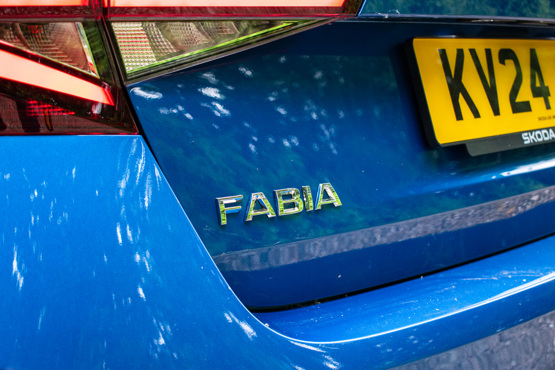
The Fabia has just been updated, with a revised powertrain and enhanced specification. So now is the perfect time to be putting it through its paces.
We’ve opted for the Fabia SE L, which sits beneath the range-topping Monte Carlo in a four-grade model range.
It’s powered by a 1.0-litre TSI petrol engine that develops 116PS. Skoda also offers a 95PS version of the engine, along with an 80PS non-turbo derivative and a more powerful 1.5-litre unit.
Our car emits 115g/km of CO2 and promises 55mpg. From a company car perspective it sits in the 28% benefit-in-kind tax band, costing a 20% taxpayer £100 per month.
To keep things simple, we’ve avoided adding any extra features to our Fabia. It's pretty well equipped, after all. The £600 Race Blue metallic paint is the only option box ticked, bringing the price to £23,125.
The standard specification includes LED headlights, ambient interior lighting, cruise control, keyless start, dual zone climate control and rear parking sensors.
You also get a 9.2-inch touchscreen with sat-nav and wireless phone connectivity via Apple Carplay and Android Auto. The central screen is complemented by a fully digital instrument cluster.
For a fairly basic small car, the Fabia certainly doesn’t feel cheap. It has a nicely finished interior with good quality materials.
Over the next six months we’ll assess the Fabia’s driveability, comfort levels, technology and running costs, to see if it’s a viable contender against the best-selling Corsa.



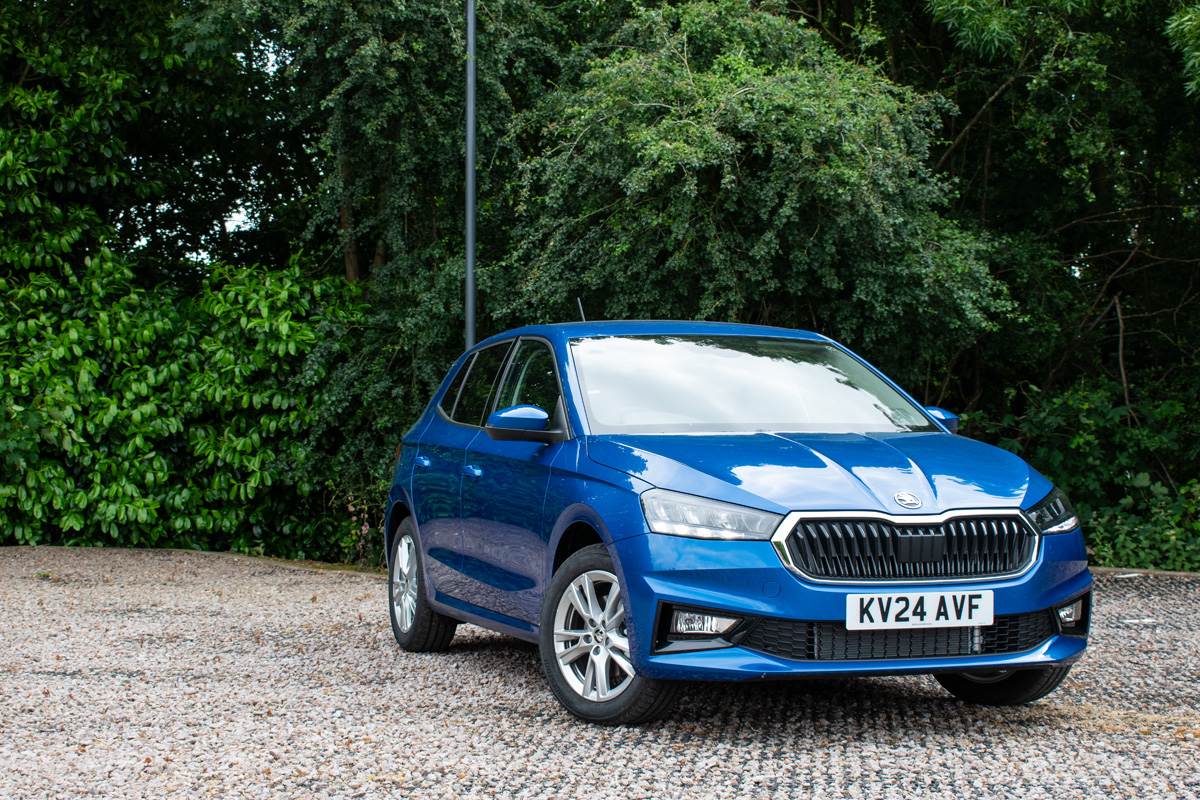
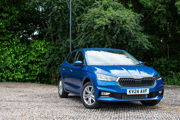
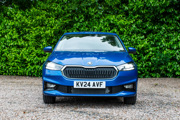
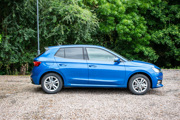
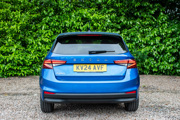
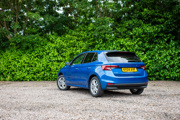
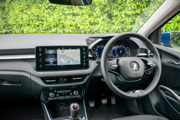
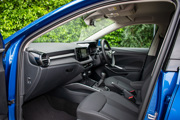
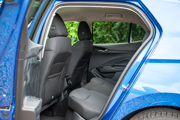
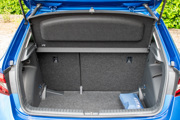


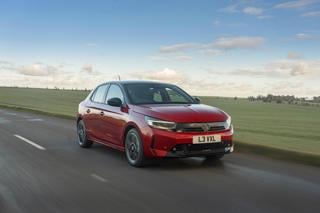
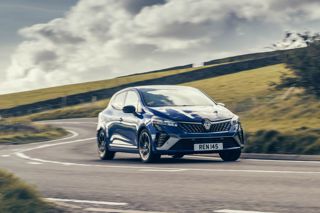
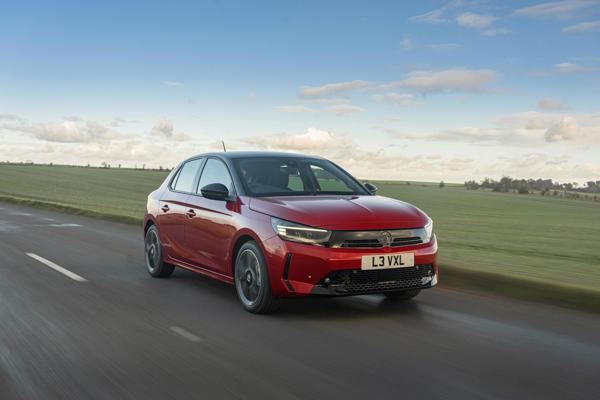
 Petrol
Petrol
